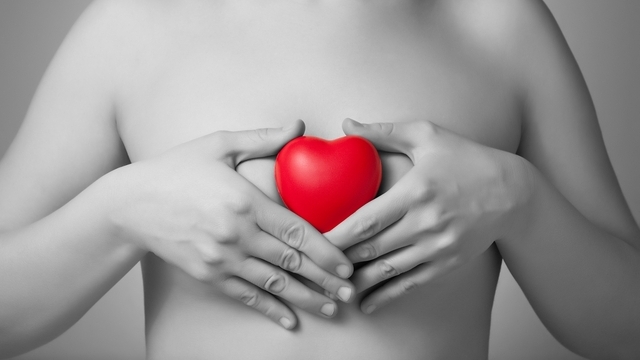 Photo: Getty Images
Photo: Getty Images
According to the National Breast Cancer Foundation, "Breast cancer types are categorized by whether it begins in the ducts or lobules. The lobules are the organs responsible for breast milk production." Also, breast cancer can develop in between your tissue.
As a breast cancer patient, you can become empowered by the more knowledge you have about your breast cancer type. Familiarity with your type of breast cancer allows you to ask the appropriate medical questions and seek the best treatment.
The following breast cancer type information was provided by the Breastcancer.org and the National Breast Cancer Foundation websites. Also, these websites offer a plethora of detailed information regarding various types of breast cancer. The following breast cancer types are in no particular order.
• Infiltrating Ductal Carcinoma (IDC). This breast cancer type represents 78 percent of all malignancies and is the most common type of breast cancer.
• Inflammatory Breast Cancer (IBC). This type of breast cancer accounts for one to five percent of all breast cancer cases. This breast cancer type is very aggressive and rare.
• Ductal Carcinoma In-Situ (DCIS). This breast cancer type is restricted to the breast ductal system.
• Less Common Types of Infiltrating Ductal Carcinomas (IDC)
o Cribriform Carcinoma of the Breast
o Mucinous Carcinoma of the Breast (Colloid). Approximately one to two percent of breast carcinomas are mucinous carcinoma.
o Medullary Carcinoma of the Breast. This type accounts for 15 percent of breast cancer types and is found primarily in women in their 40s and 50s.
o Tubular Carcinoma of the Breast. This type accounts for two percent of breast cancer cases. This type has an excellent survival rate and is typically found in women over 50 years of age.
o Papillary Carcinoma of the Breast
• Infiltrating Lobular Carcinoma (ILC). This type of breast cancer represents five percent of all cases. The National Breast Cancer Foundation stated, "The ILC breast cancer type generally usually appears as a subtle thickening in the upper-outer quadrant of the breast. These tumors respond well to hormone therapy."
• Paget's Disease of the Nipple. According to the National Cancer Institute, "Paget's disease of the nipple accounts for less than 5 percent of all breast cancer cases in the United States." This type of breast cancer affects the nipple. Symptoms include the areola and nipple becoming red, itchy, scaly, and irritated.
• Recurrent and Metastatic Breast Cancer. Unfortunately and in some cases, breast cancer may recur. Breastcancer.org offers some wonderful information and tips if your breast cancer reappears. See the following link for additional information: http://www.breastcancer.org/symptoms/types/recur_metast/
• Phyllodes Tumors of the Breast. This type of breast cancer accounts for less than one percent of all breast cancer cases. These leaf-like tumors can be benign or cancerous and even borderline. This type of cancer can develop at anytime but usually develops in women in their 40s. For more information on phyllodes tumors go to www.breastcancer.org/symptoms/types/phyllodes/
• Male Breast Cancer. Breast cancer in men occurs less than one percent of all cases. Breast cancer in men is very rare. For symptoms of breast cancer in men go to the following link: http://www.breastcancer.org/symptoms/types/male_bc/symptoms.jsp
Also, there is Lobular Carcinoma In Situ (LCIS). LCIS may be a precursor for breast cancer. According to BreastCancer.org, "LCIS is an indication that a person is at higher-than-average risk for getting breast cancer." This condition is generally diagnosed in women between the ages of 40 and 50.
References:
Types of Breast Cancer - National Breast Cancer Foundation. National Breast Cancer Foundation® Official Site - Information, Awareness & Donations. Retrieved October 20, 2011, from
http://www.nationalbreastcancer.org/About-Breast-Cancer/Types.aspx
Breast Cancer Types. Breastcancer.org. Retrieved October 20, 2011, from http://www.breastcancer.org/symptoms/types
LCIS. Breastcancer.org. Retrieved October 11, 2011, from www.breastcancer.org/symptoms/types/lcis
Male Breast Cancer. Breastcancer.org. Retrieved October 20, 2011, from www.breastcancer.org/symptoms/types/male_bc
Paget's Disease of the Nipple. Breastcancer.org. Retrieved October 20, 2011, from www.breastcancer.org/symptoms/types/pagets
Phyllodes Tumors of the Breast. Breastcancer.org. Retrieved October 20, 2011, from www.breastcancer.org/symptoms/types/phyllodes
Rare Forms of Breast Cancer. Breastcancer.org. Retrieved October 20, 2011, from www.breastcancer.org/symptoms/types/rare_idc
Recurrent and Metastatic Breast Cancer. Breastcancer.org. Retrieved October 20, 2011, from
http://www.breastcancer.org/symptoms/types/recur_metast
Reviewed October 20, 2011
by Michele Blacksberg RN
Edited by Jody Smith




Add a CommentComments
There are no comments yet. Be the first one and get the conversation started!